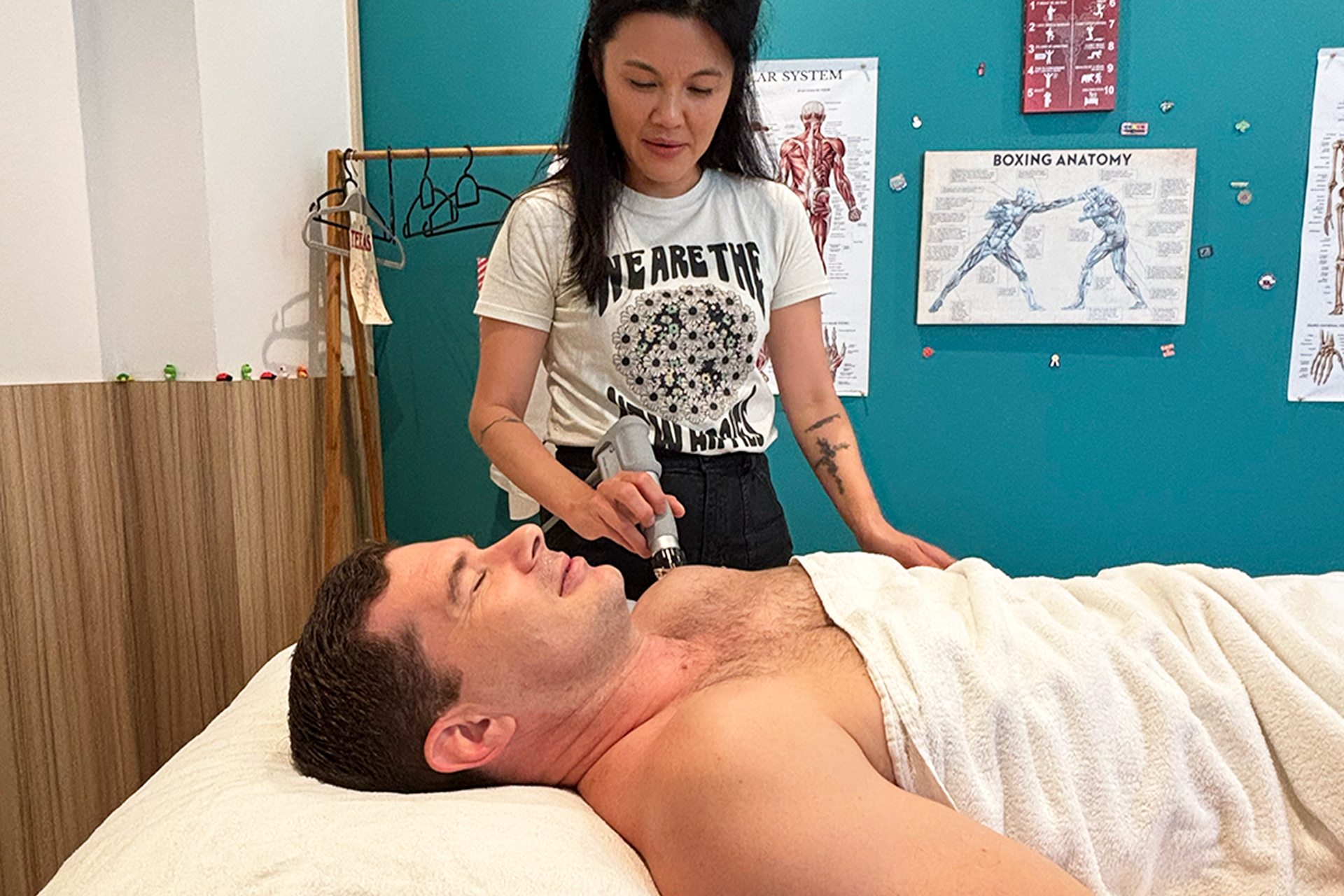Did you know that the term tennis elbow is not an injury limited to tennis players? Tennis elbow is an affliction that can affect anyone performing repeated arm motions. Most people who get the injury we colloquially call tennis elbow do not play tennis at all!
A range of options are available to manage tennis elbow and its symptoms. Some of these options are more traditional physiotherapy techniques. Other options involve modern technology to intervene and address the symptoms. The optimal approach often combines traditional and modern adjunctive modalities like HelloPhysio’s.
These modalities complement each other, addressing different aspects of the condition. INDIBA® and Shockwave Therapy target the underlying tissue damage, while manual techniques and Red Light Therapy focus on relieving symptoms and improving overall function. By combining these approaches, physiotherapists can create tailored treatment plans to manage tennis elbow and facilitate recovery effectively.
What Really Is Tennis Elbow?
The scientific name for tennis elbow is ‘lateral epicondylitis’. Specifically, it affects the tendons connecting the forearm muscles to the elbow. After repetitive motions, that tendon becomes overused, leading to pain and discomfort in the arm area.
What makes tennis elbow so troublesome is its persistent pain.
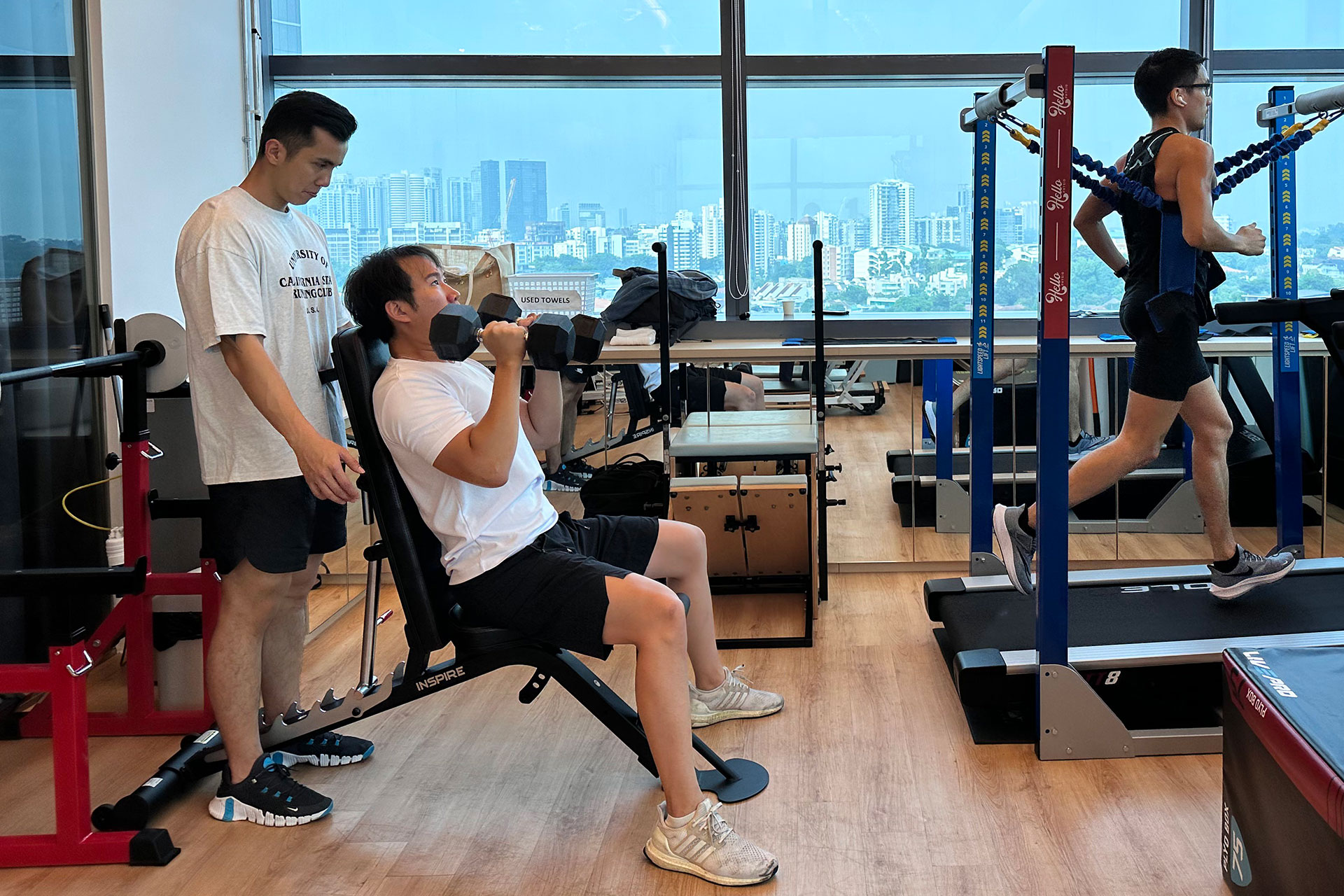
Any arm motion can trigger a reaction in the tendon, leading to pain in the forearm and wrist. This pain can worsen with gripping or lifting objects. Activities like shaking hands or turning a doorknob can also exacerbate the discomfort. Swelling and stiffness may accompany the pain; gripping objects may become difficult in advanced cases. Pain can radiate down the forearm. Symptoms of tennis elbow may vary in severity and develop gradually or suddenly.
Repetitive motions lead to tennis elbow. Any repetitive gripping, twisting, or lifting activity can lead to this condition. Common culprits include frequent use of tools, such as hammers or screwdrivers, repetitive typing or computer mouse use, and activities like painting or playing musical instruments.
Overuse or sudden increase in intensity or duration of these activities can strain the tendons, causing microscopic tears and inflammation. Poor technique or improper equipment can exacerbate the risk. Additionally, factors like age, strength imbalance between forearm muscles, and inadequate warm-up may contribute to its development, too.
How can I differentiate between tennis elbow and other types of elbow pain?
To differentiate between tennis elbow and other types of elbow pain, consider the location, causes, symptoms, and medical history. Tennis elbow typically causes pain on the outside of the elbow, often due to repetitive strain or overuse of the forearm muscles. Symptoms include pain and tenderness on the outside of the elbow, weakness in the forearm, and difficulty performing activities that involve gripping or lifting. A history of repetitive strain or overuse in your occupation or hobbies may indicate tennis elbow.
Tennis Elbow Can Get Worse without Treatment
Tennis elbow can worsen without proper treatment. If left untreated or if treatment is delayed, tennis elbow can lead to further complications and prolonged recovery times.
Without proper rest and treatment, the inflammation in the affected tendon can persist, causing ongoing pain and stiffness. Prolonged inflammation and lack of proper treatment can cause muscle weakness, making it more difficult to perform daily tasks and increasing the risk of further injury.
Untreated tennis elbow can also lead to chronic pain and reduced mobility and flexibility in the elbow, wrist and forearm, making it harder to perform activities that require these joints, significantly impact daily activities and quality of life. If the tendon is not allowed to heal, it can rupture, leading to more severe symptoms and potentially requiring surgical intervention.
INDIBA Activ as Tennis Elbow Treatment
INDIBA® Activ leverages radiofrequency technology to stimulate tissue regeneration, promoting healing and reducing inflammation. The treatment stimulates, vascularizes and hyperactivates biological tissue, enhancing the body’s natural healing mechanisms. This process increases vascularization and oxygenation, optimizing tissue recovery and initiating repair and anti-inflammatory processes.
INDIBA therapy enhances cellular metabolism, restores tissue to combat fibrosis, and improves venous and lymphatic reabsorption, reducing inflammation and waste products.
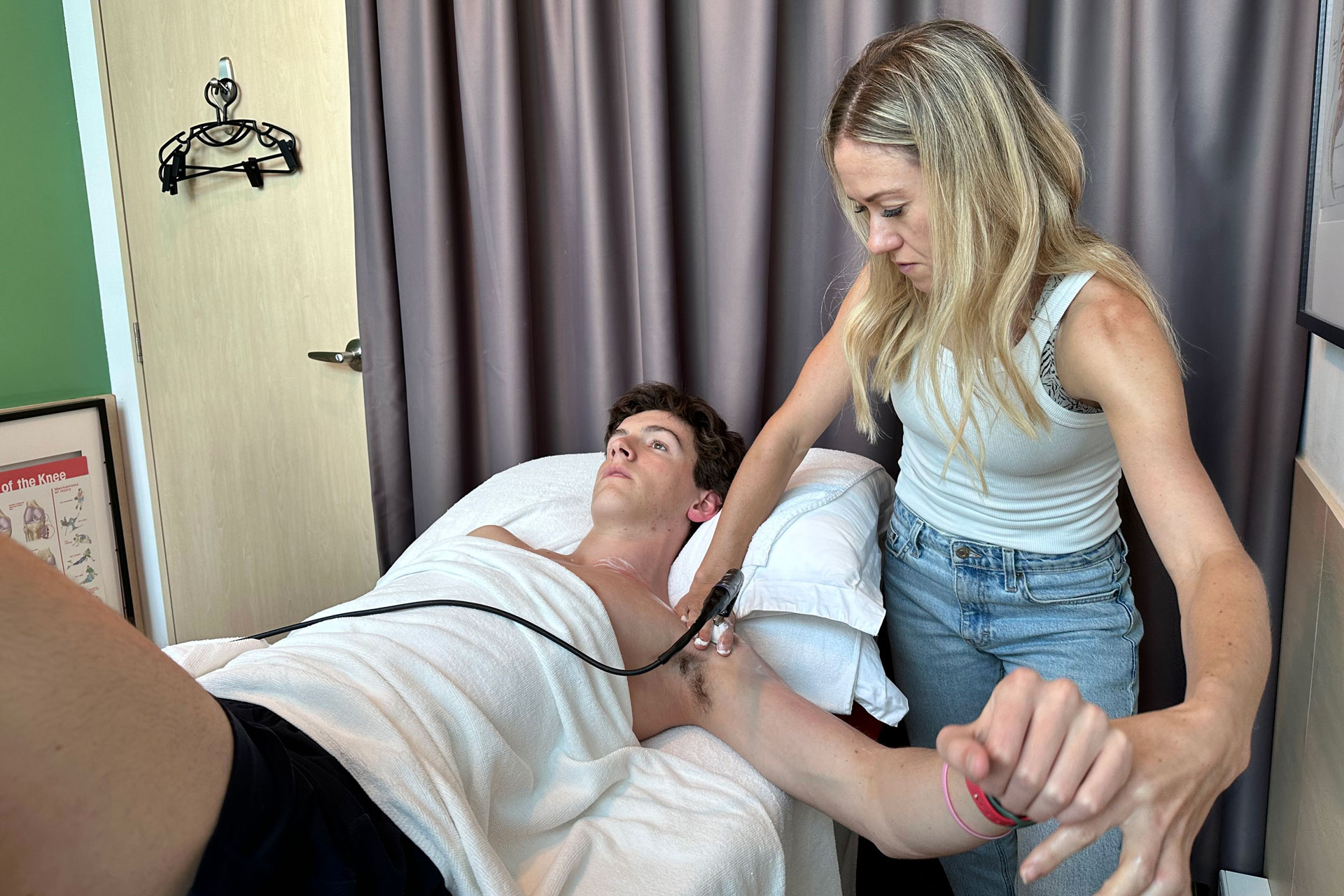
The treatment reduces pain from the first session, making it effective for musculoskeletal injuries and other conditions. By accelerating tissue repair and regeneration, INDIBA therapy improves mobility and pain reduction, which is particularly important for athletes and individuals requiring rapid recovery. It can be integrated with manual therapy, enhancing its effectiveness by combining the benefits of both approaches.
INDIBA therapy offers a comprehensive and non-invasive approach to tissue regeneration, effectively treating various musculoskeletal conditions.
Shockwave Therapy Promotes Circulation and Metabolic Healing
Shockwave therapy employs high-energy pulses to stimulate healing and reduce inflammation. The treatment works by mechanically stimulating fibroblasts and osteoblasts, enhancing healing and potentially dissolving calcific deposits.
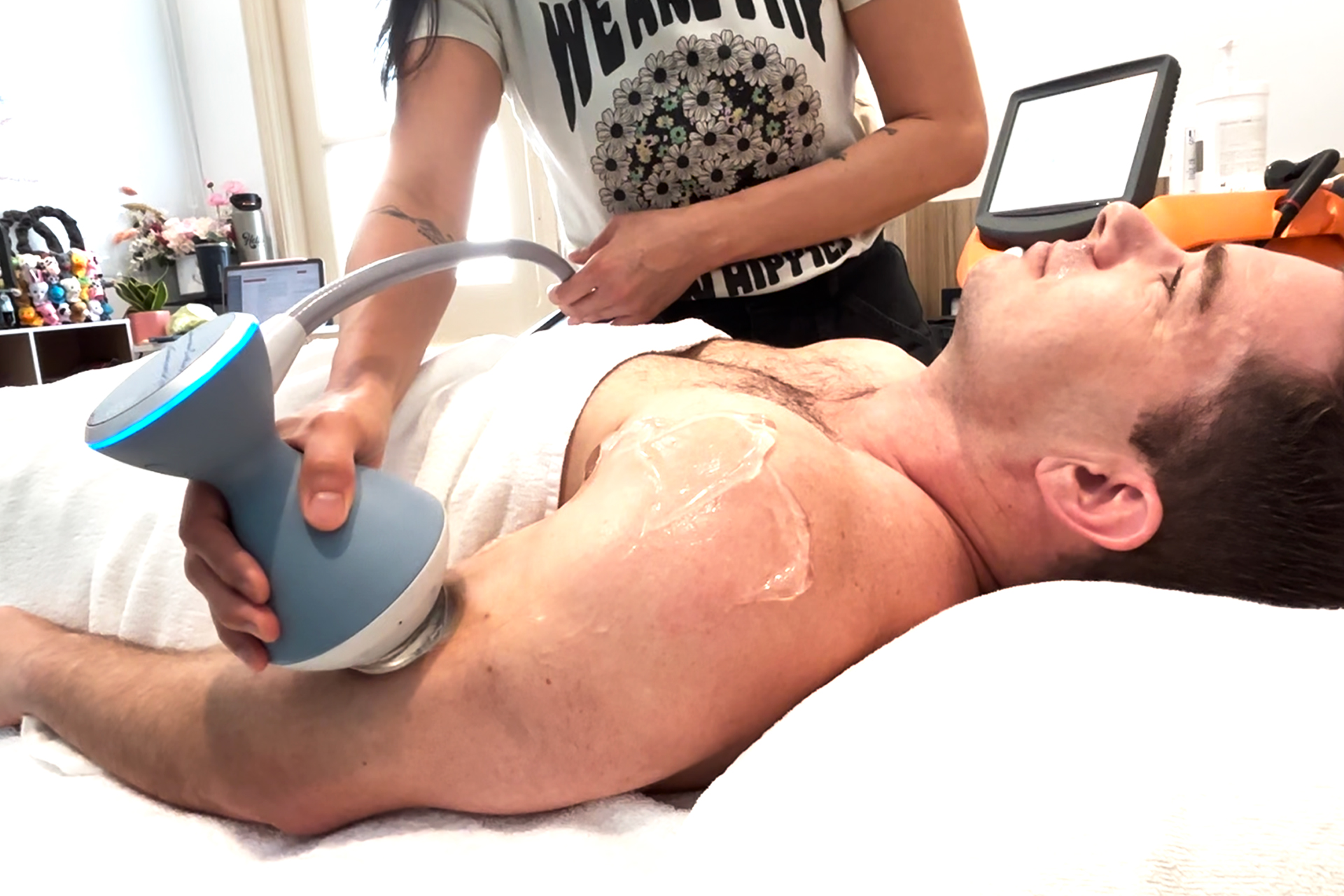
Additionally, shockwaves increase cell membrane permeability, promoting circulation and metabolism within the treated area. The treatment also stimulates the release of nitric oxide, a potent vasodilator that enhances blood flow and oxygen delivery to the affected area, aiding tissue regeneration and healing. Furthermore, shockwaves diminish pain through hyperstimulation anesthesia and the gate-control mechanism.
Finally, the treatment reduces local inflammatory reactions, preventing further tissue damage and promoting faster recovery. Shockwave therapy leverages these mechanisms to stimulate tissue regeneration, reduce inflammation, and promote healing in various musculoskeletal conditions.
Dry Needling Effective for Tennis Elbow
Dry needling is a treatment option for tennis elbow that involves inserting fine, sterile needles into specific points on the body to alleviate pain, improve range of motion, and facilitate rehabilitation. It works by stimulating the body’s natural healing response, reducing inflammation, and releasing muscle trigger points. This helps to relieve pain, improve grip strength, and enhance the overall function of the arm, shoulder, and neck. The procedure involves inserting needles into trigger points in the forearm muscles and tendons affected by the tennis elbow.
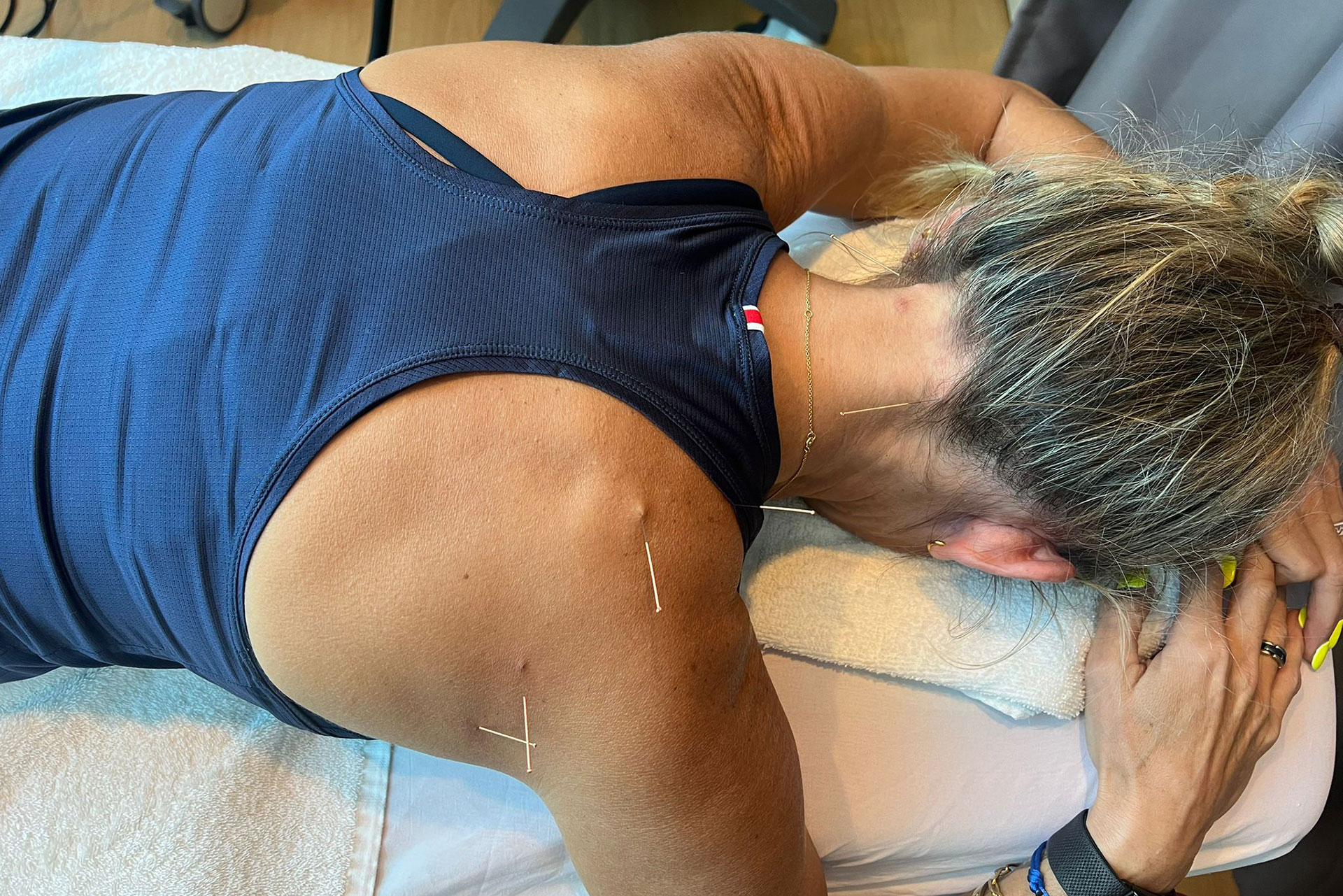
Dry needling can significantly relieve tennis elbow pain, improve range of motion, and reduce muscle tension. It is a minimally invasive procedure with few side effects, making it a safe and effective alternative to traditional treatments.
LightStimRed Light Therapy to Decrease Inflammation and Pain
Red light therapy is a non-invasive and painless treatment option for tennis elbow that reduces pain and inflammation and improves range of motion. It increases blood flow to the affected area, promotes the body’s natural healing process, and removes accumulated waste products. This leads to faster healing and reduced pain and inflammation. Red light therapy can significantly relieve tennis elbow pain, improve grip strength, and enhance overall arm function. It is a safe and effective alternative to traditional treatments and can be used alongside other therapies.
Schedule an Appointment with Our Senior Physiotherapists
Recovery from tennis elbow varies depending on the severity of the condition and individual factors. Mild cases may improve within a few weeks with rest, ice and anti-inflammatory measures. Moderate cases may take several months of physiotherapy, including exercises to strengthen and stretch the affected muscles. Severe cases, or those with persistent symptoms, require longer-term management and lifestyle modifications.
Patience and adherence to treatment plans are crucial for successful recovery. As your physiotherapist advises, consistent rehabilitation may range from weeks to months, often yielding the best results.
By addressing underlying issues and promoting healing, physiotherapy aims to restore function and prevent further deterioration, often achieving positive outcomes without the risks and recovery time associated with surgery.
If you’re suffering from daily pain from your tennis elbow, contact our clinical appointments team today to get ahead of your injury and get back into your daily active life without pain.

